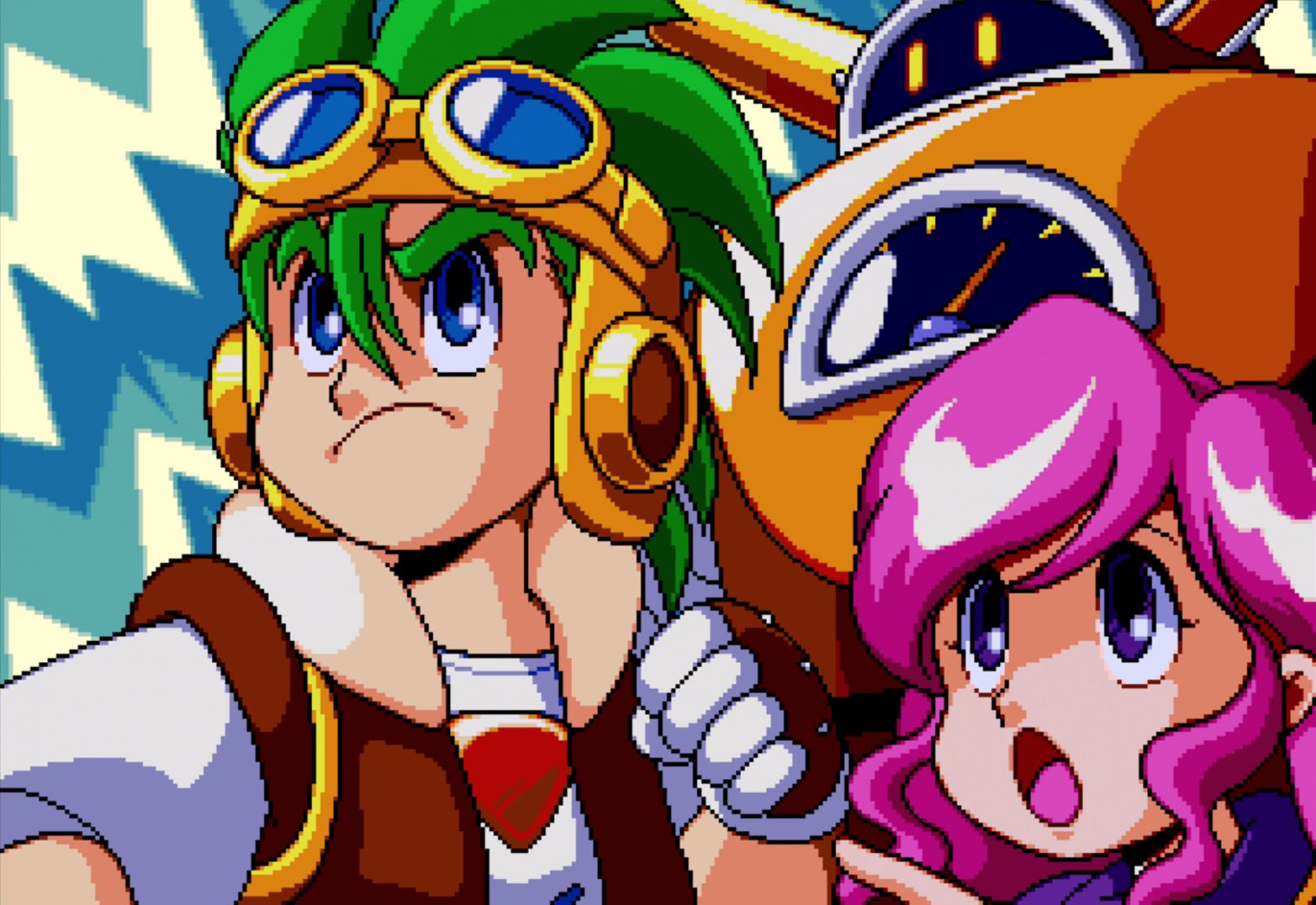Upon the arrival of the 32-bit era of gaming, the 2D games that had dominated the games industry began to disappear in favor of 3D games. One casualty of this shift was Clockwork Aquario, a 2D arcade game from the creators of the Wonder Boy series, Westone. The gorgeous platformer was canceled before completion and thought lost to time. Fast-forwarding nearly 30 years, ININ Games and Strictly Limited Games recently resurrected the project. Clockwork Aquario is now available on PlayStation and Switch, complete with 2-player local co-op.
The game’s beautiful but oddly silent introduction establishes the setting of the strange world of Aquario. There, the Evil Dr. Hangyo, whose appearance clearly homages the Dappya from Urusei Yatsura, emerges from the sea with an army intent on taking over the world. Only three people (one of which is actually a robot) can stop the bad doctor’s ambitions and save Aquario.
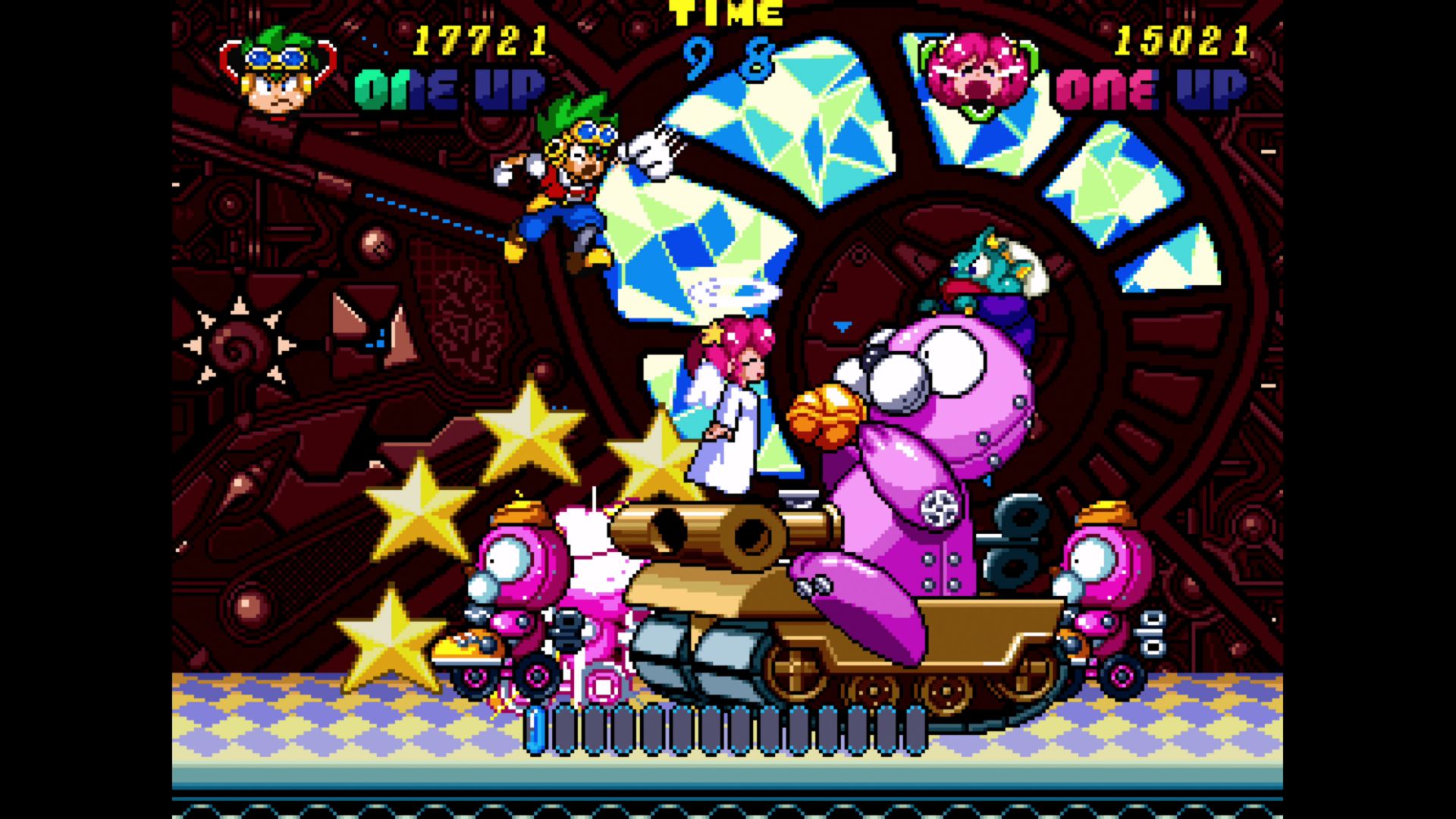
At the start of every game, one or two local players will select from three playable characters: green-haired Huck Londo, pink-tressed Elle Moon, and the gangly robot Gush. The protagonists don’t play any differently; their differences are purely aesthetic. Still, the heroes do convey a nice bit of personality through their sprites and sounds, and each has his or her own Trophy for beating the game as well.
Clockwork Aquario is a 2D action platformer consisting of five sprawling levels. Our heroes navigate the colorful environments primarily by running and jumping. Taking one hit causes the player character to take on a weakened appearance; another hit will result in a lost life. Thankfully, enemies drop health restoration potions fairly often, so Huck and team can recover from damage if they play carefully enough. On rare occasions, enemies will also drop an item that turns the heroes gold and lets them shoot projectiles for a short time, which is always fun.
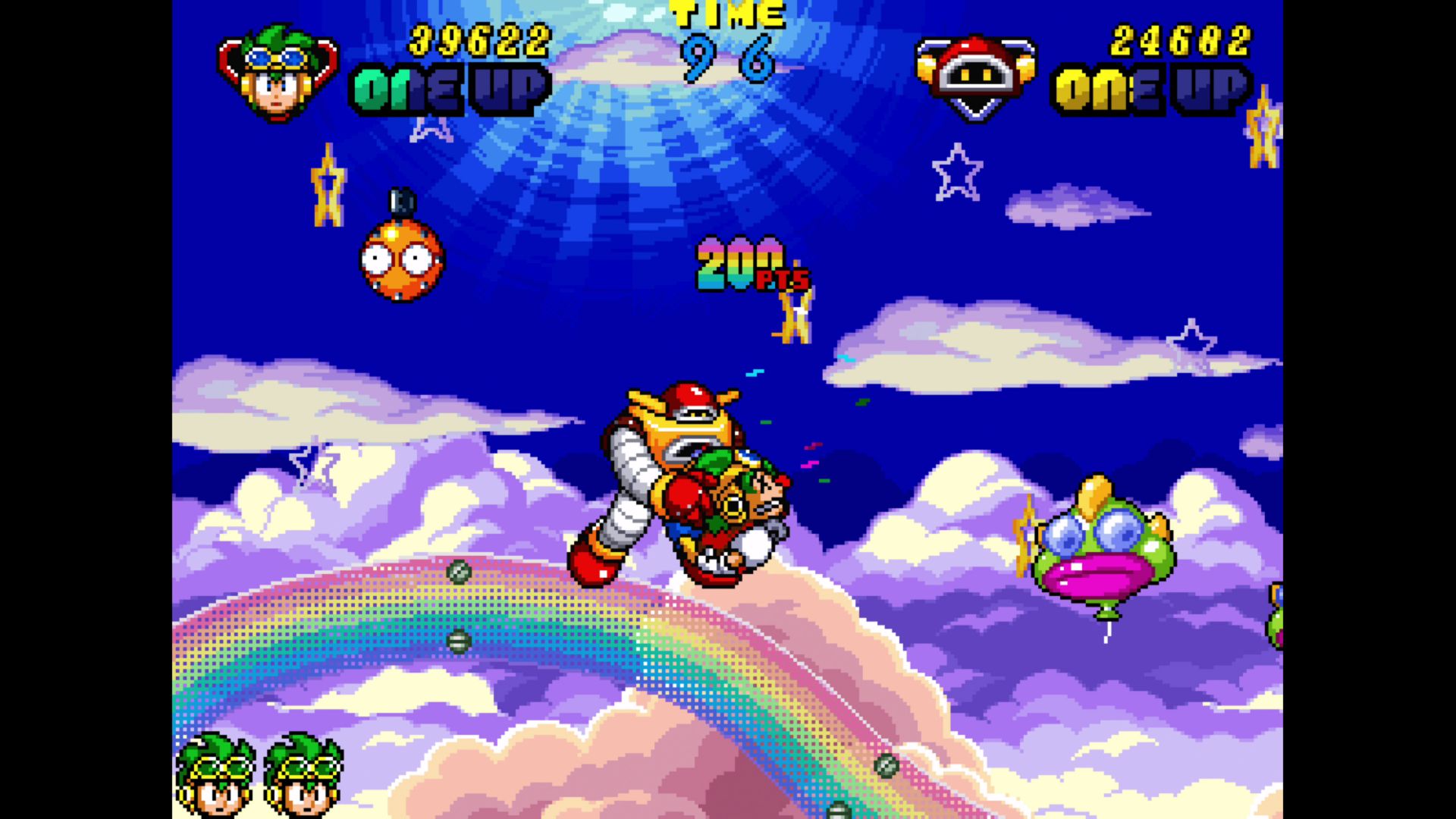
Enemies can be attacked by punching, grabbing, throwing, and jumping on or under them. Players can also bounce on each other (stunning the recipient of the bounce) and even throw each other. Tossing your partner around is a very effective attack that can either help a less-skilled partner get across dangerous terrain or inadvertently put the thrown partner in danger. Cooperative play definitely involves plenty of accidental bouncing and throwing, but that’s part of the game’s charm.
Each of Clockwork Aquario’s levels involves a mid-level encounter with an oversized bad guy and concludes with a fight against a gigantic boss. The bosses are all robotic animals piloted by Dr. Hangyo, who escapes when his creations are defeated, just like Eggman in the 2D Sonic the Hedgehog games. These boss bots can usually be defeated by throwing smaller enemies at them or jumping on top of them repeatedly. They’re mostly easy enough, but they can still take their toll when you’re playing with limited credits. Between levels during co-op games, both players will engage in a competitive minigame in which the goal is to pop the other player’s supply of balloons. The minigame can be unlocked and played on its own as well.
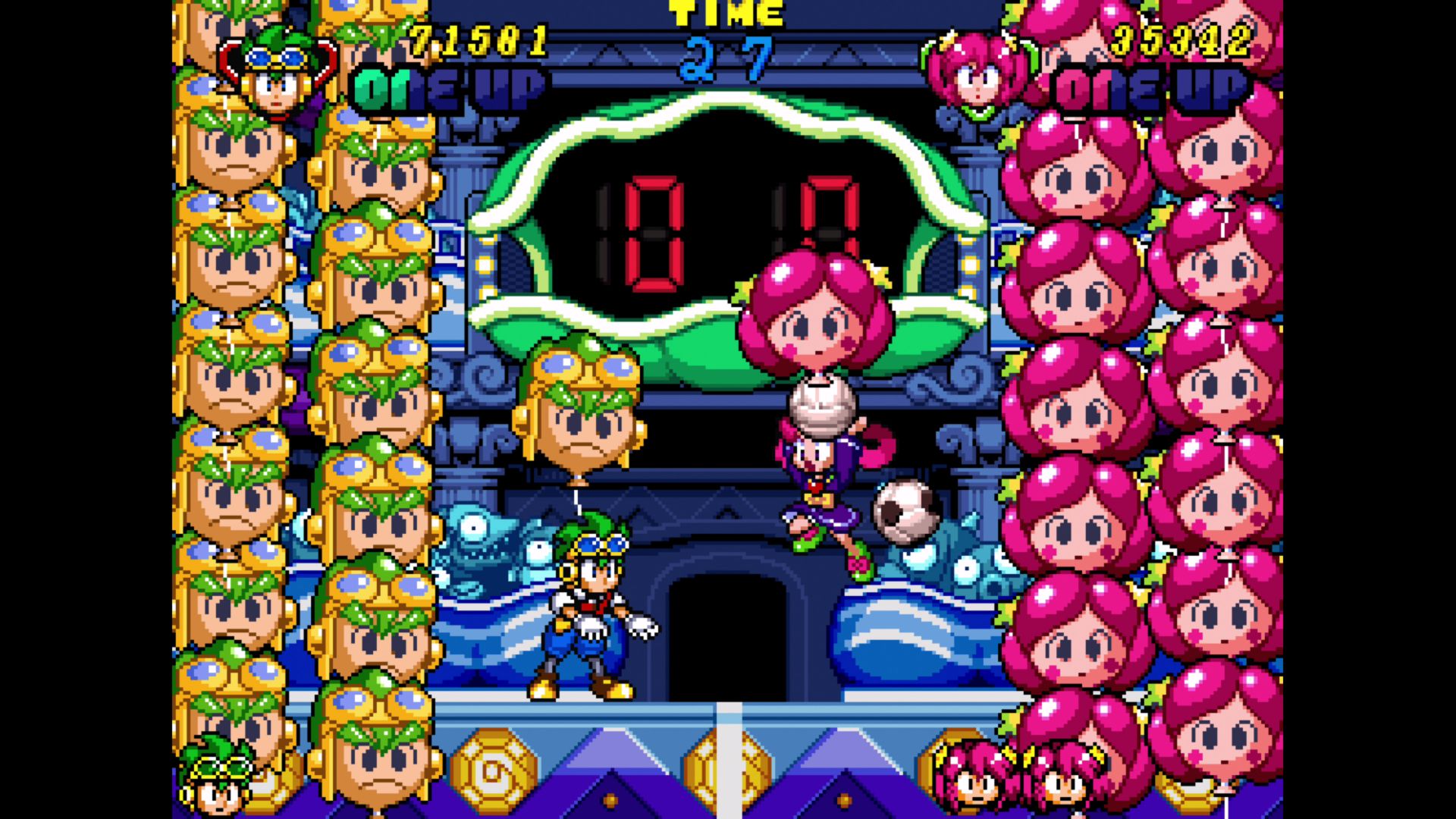
One look at screenshots or video of Clockwork Aquario will reveal a beautiful game from the 32-bit era. All five levels are overflowing with color, animation, and parallax scrolling. The enemies might lack variety, consisting entirely of various large-eyed cartoon robots and balloons, but they match the cheerful aesthetic quite well. Gamers who enjoy classic Sega and Treasure platformers like Sonic CD, Silhouette Mirage, and Gunstar Heroes will find a lot to love from this game’s vibrant visuals and atmosphere.
The actual porting of Clockwork Aquario to PlayStation and Switch was handled by Ratalaika Games, who also recently ported several classics in the Cotton series for ININ Games. This newly completed version of the game includes a fair number of extras and emulation enhancements. In the extras department, the developers have included numerous pieces of concept art and two soundtracks. The remixed soundtrack, which is quite good, can’t be used during actual gameplay – a missed opportunity.
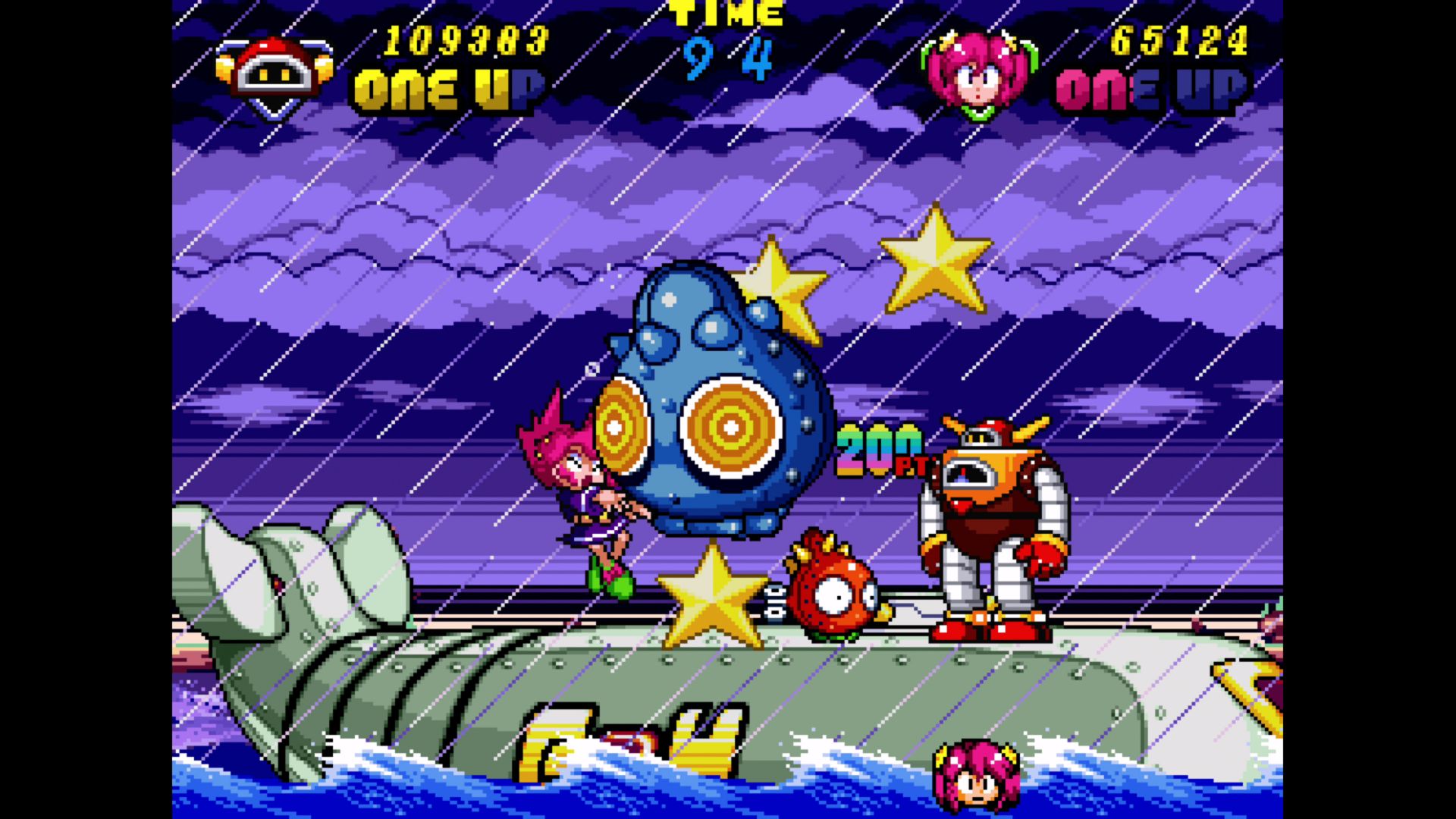
Graphically, pixel smoothing can be adjusted, as can the aspect ratio. Unless gamers choose to stretch the image, the game will use a 1:33 aspect ratio. There are no widescreen borders available, so the game just displays black borders on the sides of the screen by default. That’s a real problem with all of Ratalaika’s recent ports for ININ. Widescreen borders are the standard for modern presentations of classic games, and Clockwork Aquario really should have included some to choose from.
Longevity can be an issue with new releases of classic games, especially arcade games. To combat this, Clockwork Aquario offers several modes, each with varying numbers of continues. Training mode lasts for only two stages but offers unlimited continues, making it a short but good place to learn the game mechanics. Easy gives 9 credits (shared between both players), which is tough but beatable with practice. Normal’s limit of five credits and Hard’s scant limit of three credits will make beating the game much tougher. The game doesn’t have difficulty-specific Trophies, so difficulty selection is only a matter of personal preference.
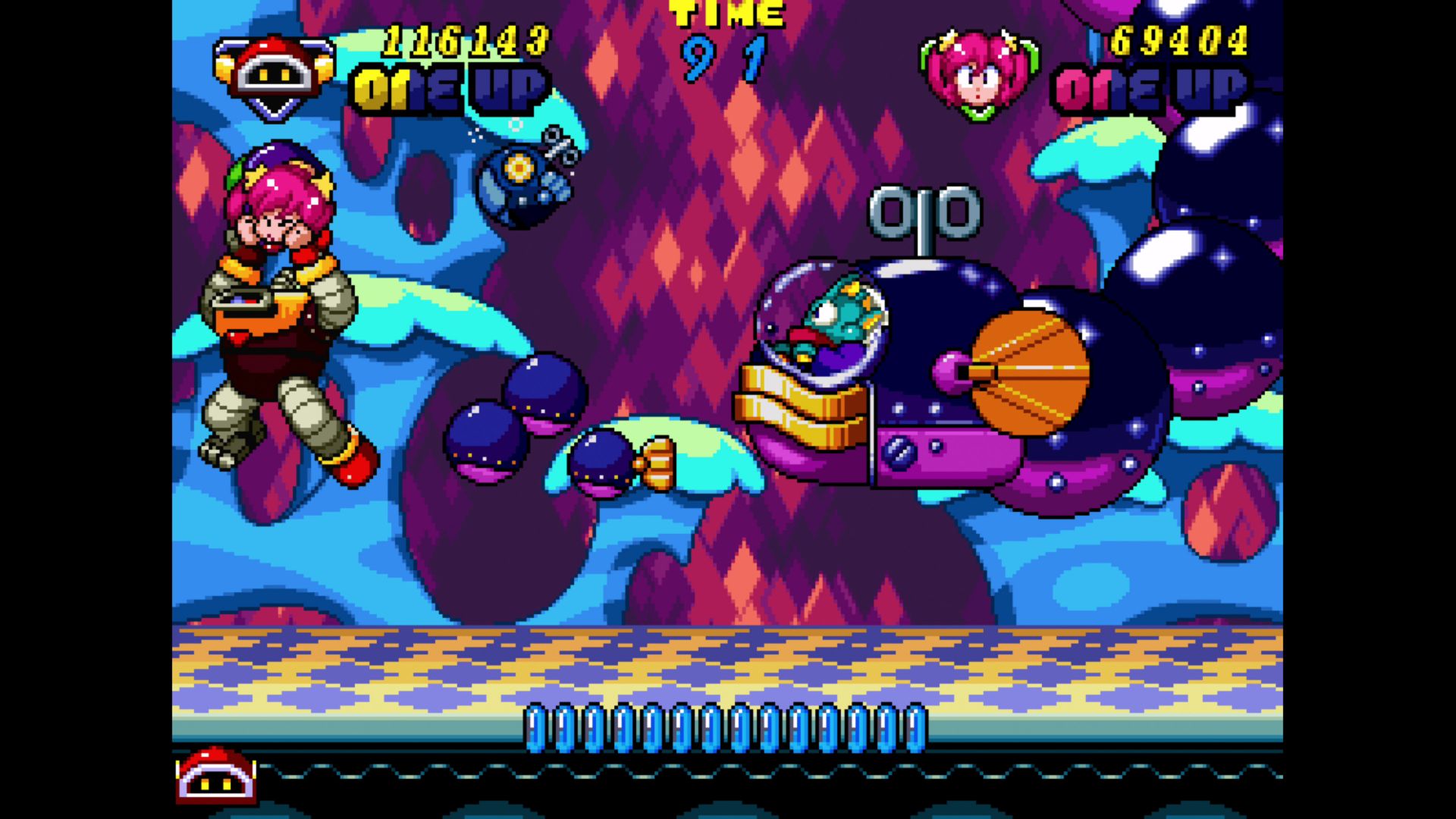
The option to play the full game without a credit limit is limited to Arcade Mode. Here, you’ll get the full arcade experience that Clockwork Aquario would have provided had it been released as planned in the 1990s. Two issues harsh the buzz of Arcade Mode, though. First, the mode always starts out in an arcade-style test menu. Kudos to the developers for including access to the test menu, but it should really be a separate option, not an obstacle to getting into the game.
The second and more irksome problem is that the developers have inexplicably mapped the reset/test menu option to the L1/L button on the controller. Pushing it will reset the game and return to the test menu with no way to resume the in-progress game. L1 is commonly used to insert credits in other home ports of arcade games, so players are bound to accidentally reset the game and lose their progress here. There’s no option to remap or disable the test menu button, either. I ended up having to use the PlayStation 5’s Customize Buttons feature to remap L1 to the R3 button just so that my partner and I could beat the game without frustration. An in-game control settings menu is badly needed.
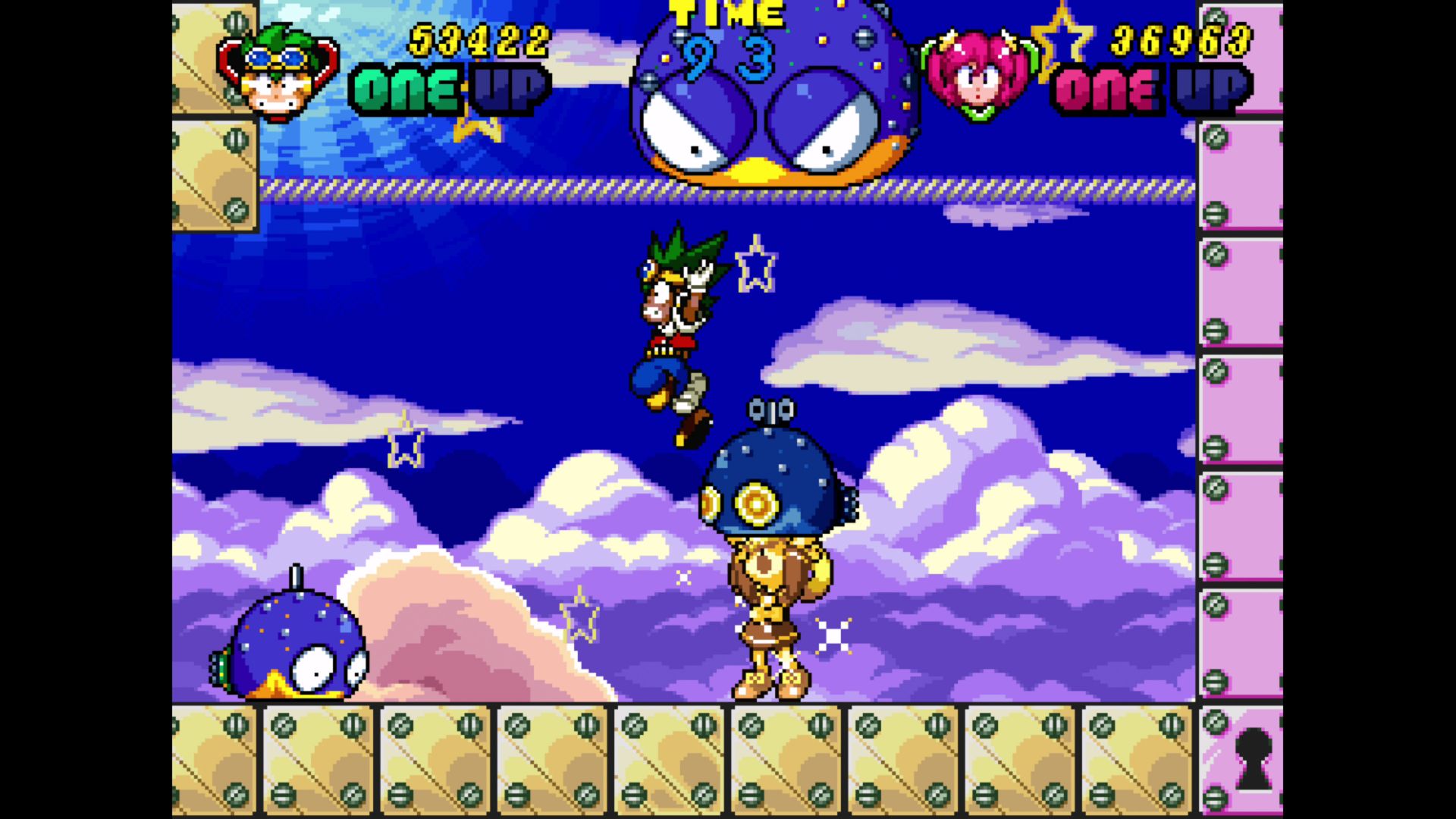
ININ and Strictly Limited’s Clockwork Aquario is a miraculous release of a game that might have stayed lost and canceled forever. While the game itself isn't really a flawless masterpiece, it does feature clever co-op mechanics, a colorful and appealing visual style, and gorgeous sprites. The lack of widescreen borders and the inexplicable mapping of the test menu button in Arcade Mode keep this release from perfection, but don’t let that scare you away. Anyone who loves platformers from the 16-bit and 32-bit eras needs to experience the world of Aquario.
Clockwork Aquario sells for $9.99 on Xbox, PlayStation, and Switch. Physical editions are available at Strictly Limited Games.
A PlayStation review code was provided by the publisher.
Verdict
Co-Op Score
Overall
The Co-Op Experience: A second player can jump in at any time and help defeat Dr. Hangyo. Co-op players can bounce on each other's heads and even throw each other at enemies. Exclusively during co-op games, players will also engage in a balloon-popping minigame between levels.
Co-Optimus game reviews focus on the cooperative experience of a game, our final score graphic represents this experience along with an average score for the game overall. For an explanation of our scores please check our Review Score Explanation Guide.
